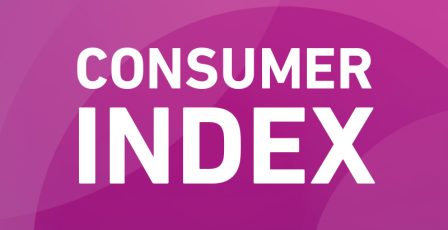6 considerations on integrating climate risk into lenders’ credit risk management
The commercial lending industry is playing a key role in addressing climate change. Factoring a business’s carbon emissions into lending decisions is quickly becoming a must in risk management, and this is transforming lenders’ practices.
A snap poll of lenders in our recent webinar found that 39% of participants were already integrating climate risk into their credit risk strategy.
Lenders are facing pressure from regulators, with increasing credit risk from the physical and transition risk associated with climate change. Integrating climate risk metrics into credit risk management could be a significant step for most lenders, but it is a necessary requirement for their net-zero commitments and a carbon-neutral future.
This blog provides a roadmap for lenders on how to incorporate climate change considerations throughout the credit lifecycle. It also sheds light on the tools and processes that are becoming increasingly central to these efforts. As a starting point in embedding climate risk into the credit risk lifecycle, lenders should reassess their credit business strategies to address climate change issues.
A new area of integrating climate risk for lenders
When taking on new customers – and managing existing ones – lenders need to work out how much credit risk they present. But today, they need to know something else about their customers too. How much climate risk will that customer add to the portfolio? This is much less familiar territory.
What is climate risk in commercial lending?
Climate risk in commercial lending refers to the potential financial risks that arise from the physical impacts of climate change and the transition to a low-carbon economy. Climate change poses a range of risks to businesses and economies, including physical risks from extreme weather events, such as floods, droughts, and wildfires, and transition risks from the shift to a low-carbon economy, such as policy changes, technological disruptions, and shifts in consumer preferences. Commercial lenders are exposed to climate risks in various ways, including through their exposure to industries that are highly sensitive to climate change impacts, such as agriculture, real estate, and infrastructure, and through their investment in high-carbon sectors, such as fossil fuels.
These risks can affect the creditworthiness of borrowers, leading to potential loan defaults and financial losses for lenders.
To manage these risks, commercial lenders need to assess the climate-related risks of their borrowers, integrate climate risk considerations into their lending decisions and risk management frameworks, and develop strategies to mitigate and manage these risks over the long term. This includes evaluating the physical and transition risks of their loan portfolios, integrating environmental, social, and governance (ESG) factors into their lending decisions, and investing in low-carbon and climate-resilient projects and technologies.
The emissions produced by 97% of UK businesses are effectively invisible to them.
These businesses make up: a third of the UK’s total emissions & two-thirds of corporate emissions.
Why does financing businesses with big carbon footprints now present a real risk?
Lenders and financial institutions are being held increasingly accountable for the downstream carbon emissions that their lending finances (financed emissions). Climate-related costs are thus a source of credit risk. Virtually all stages of the credit lifecycle will likely be impacted by climate risk. Lenders are beginning to infuse more climate-related considerations into each step of the credit management process.
An accurate assessment of all credit risks, including climate credit risk, is central for lenders. If they underestimate it, they are exposed to financial losses and to the risk of holding assets of inadequate credit quality. Financing businesses with big carbon footprints now presents a real risk, for three reasons:
- The regulator (Prudential Regulation Authority – PRA) now insists that lenders quantify and manage these emissions.
- Investor and public pressure encourage banks to set stretching internal targets on reducing financed carbon within their portfolios.
- Carbon-intensive businesses are a growing credit risk.
A firm whose key business is carbon intensive faces a less secure future as we move towards a low-carbon economy (transition risk).
And firms that operate in places and ways that make them especially vulnerable to climate change (through flooding for example) also face challenges (physical risks). The Prompt Corrective Action (PCA) Framework now insists that lenders hold adequate capital reserves in the face of these climate risks.
So, lenders now need to know about climate risk and how to factor customer carbon emissions into their risk management.
Six considerations on integrating climate risk into lenders’ credit risk management
- Two-thirds of corporate emissions come from SMEs, but this is where the data can be the patchiest. Lenders wanting to know what level of emissions they are financing need to understand what SMEs contribute. But this has been a data blind spot, as very few small and medium-sized businesses complete carbon footprint assessments. The PRA accepts that estimates will be needed, but some are very blunt and inaccurate.
- Micro-businesses make up the biggest chunk of SME emissions – but they are the least likely to be calculating their carbon footprint. Experian estimates of the carbon footprint of SMEs are the most accurate and sophisticated available. These suggest that micro-businesses with fewer than ten people contribute almost as much carbon as small and medium firms combined. So a lender with thousands or millions of micro customers in its portfolios will be financing significant carbon emissions. This is only visible to lenders using accurate proxies, as micro-firms are highly unlikely to be calculating their carbon footprint.
- Carbon emissions are concentrated in certain sectors. Manufacturing and Agriculture, Forestry and Fishing (AF&F) stand out as the two sectors producing the most carbon emissions among SMEs. Manufacturing is the biggest producer, despite being only the tenth-biggest sector by the number of companies. Firms in the industry emit more than 60 million tonnes of carbon a year. AF&F is a clear second, producing more than 40 million tonnes, despite being only the 15th-biggest sector by the number of firms. Transport and storage (the 11th biggest sector) is the only other category producing more than 20 million tonnes. Lenders exposed to these sectors will have significant climate risks in their portfolios.
- Not every firm within a sector is the same when it comes to emissions – knowing the firm’s sub-sector is critical.Knowing a company’s sector is not enough to make a reasonable estimate of its carbon emissions. Within a sector, the exact nature of a company’s work makes a huge difference. Lenders using estimates mainly based on a business’s top-level sector are likely to be building in significant inaccuracies.
- A company’s carbon intensity seems to mirror its credit risk. When we plot a firm’s intensity of carbon usage (carbon usage per £ of revenue) against the credit risk it poses, we see something interesting. Broadly speaking, more intense carbon usage correlates with higher credit risk. There are several reasons for this:
- Businesses using large amounts of energy are exposed to fluctuating energy prices, which is a substantial credit risk.
- They are exposed to the risk of more environmentally conscious buyers increasingly choosing a greener alternative.
- Net-zero targets are creating further pressure on the sustainability of their business model. All of these factors tend to make energy-intensive businesses a greater credit risk.
- 50-90 employee companies seem to have the lowest intensity of carbon usage. This sweet spot for energy usage per employee varies by sector. But overall, businesses in the 50-90 employee range show the greatest energy efficiency. They benefit from economies of scale but are not large enough to become unwieldy. The size of a firm is an essential factor in lenders accurately estimating its carbon emissions.
Summary
Today, risk professionals must be able to estimate borrowers’ carbon emissions effectively. These estimates are the foundation of:
- Understanding credit risk because climate risk is an increasingly important factor in risks to the health of a business
- Calculating your financed emissions
- Benchmarking – seeing how your financed emissions are changing over time or how they compare to UK averages
- Developing policy rules that balance financed emissions targets and revenue impact
- Targeting low carbon-intensity organisations as new customers to reduce the risk in a portfolio
- Developing and refining net zero strategies – and tracking progress robustly.
Making reliable estimates can be tricky, especially with SMEs, because these businesses account for most of corporate emissions.
The lenders leading the field are using data that looks beyond the headline figures to get much closer to the truth about climate risk in their portfolios.
How can we help?
ESG Insight allows lenders to take a big step towards including climate change and broader ESG matters in the heart of decision-making.
It allows lenders to calculate, manage and report on their downstream customer emissions levels – accurately, easily and fast.
With Experian ESG Insight we can give you by far the most reliable baselines and figures available. With our help, you can build your emissions strategy on firm ground.









